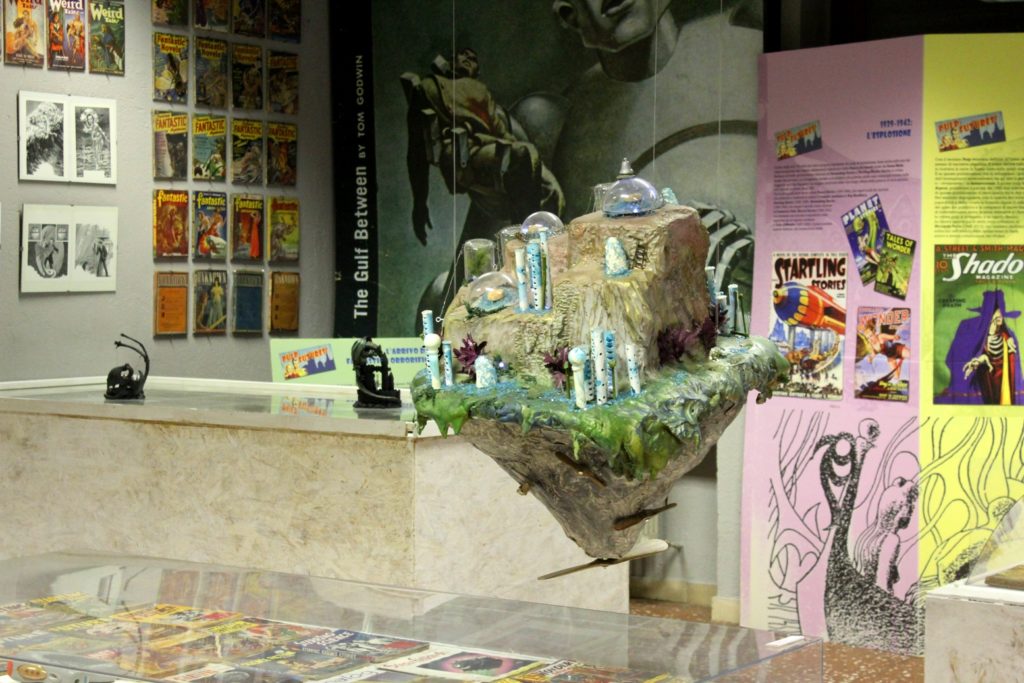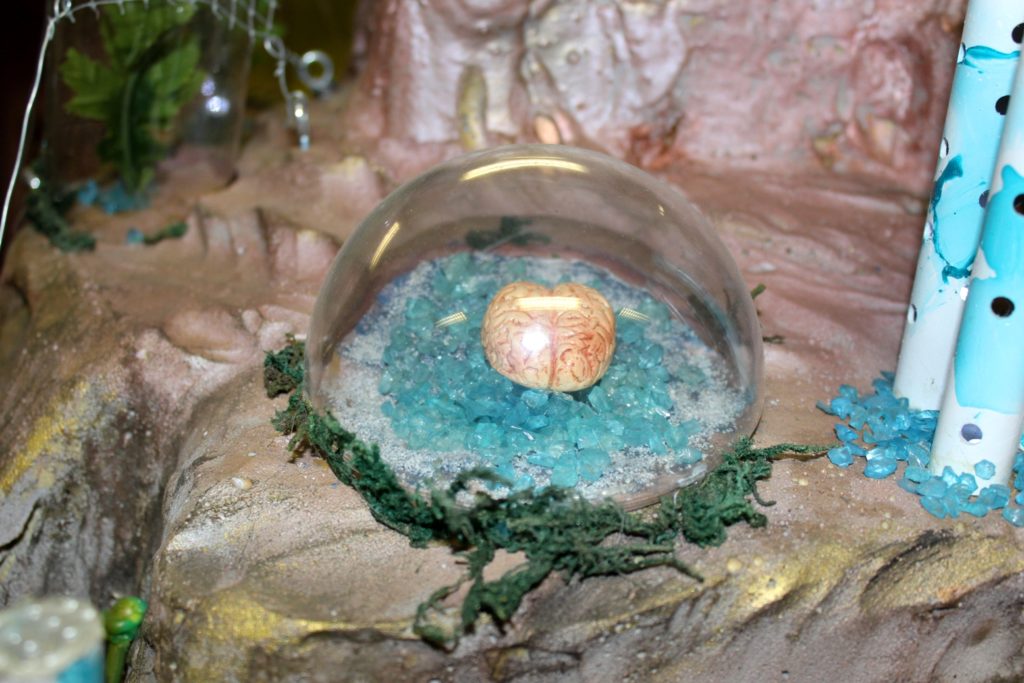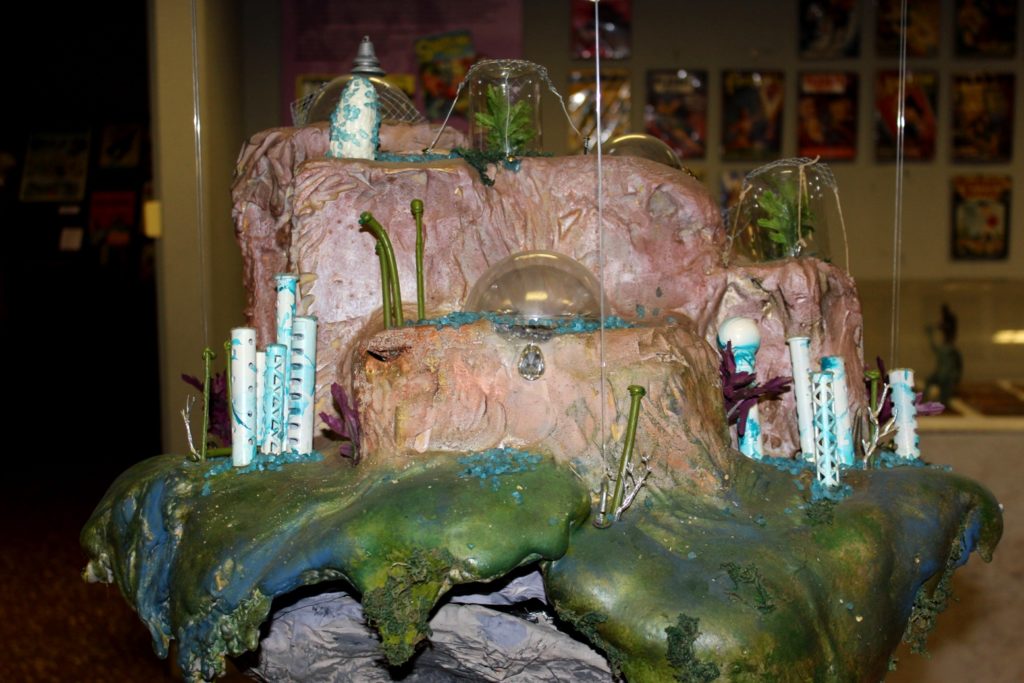This exhibition follows the path of birth and evolution of the American science fiction presented by the Pulp magazines between the late 1920s and the early 1940s.

The exhibition includes the collectors’ items of Amazing Stories, Weird Tales, Astounding Stories, Wonder Stories, and many other pulp magazines’ editions from the personal collection of Riccardo Valla (1942-2013), one of the leading experts and publishing editors of the Italian science fiction.

At the beginning of the 20th century, the term Pulp was used to define cheap popular fiction magazines.
They are named after the wood’s pulp served as a raw material used to produce a low-cost paper on which these magazines were printed.
And based on these publications the main genres of the 20th century’s fiction were developed: detective, romance, horror and – of course – science fiction.

The first pulp is generally considered The Argosy, published at the beginning of 1882 by the publisher Munsey, but the golden age of these publications is certainly the period between the two World Wars.

After the Second World War, with the expanding market of paperbacks and digest magazines, the refinement of public tastes and the appearance of new forms of entertainment such as TV series and comics, pulp magazines began their fast decline.

One section explores the colorful cover illustrations made by Frank Paul dedicated to the Città del Futuro (City of the Future) and there is The Floating Island installation in the center of the room, a tribute to the Isola a Elica (Elica Island) by Jules Verne and to the flying cities of Paul’s covers created by the artist CRISIPLASTICA.


